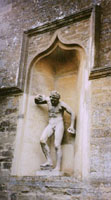Gardens
Like Apollo Belvedere and Artemis of Versailles, copies of Venus and Faun were set in grand houses and gardens.
Blenheim
The Duke of Marlborough secured some of the earliest copies in bronze, for Blenheim Palace near Oxford, from Massimiliano Soldani in 1711.
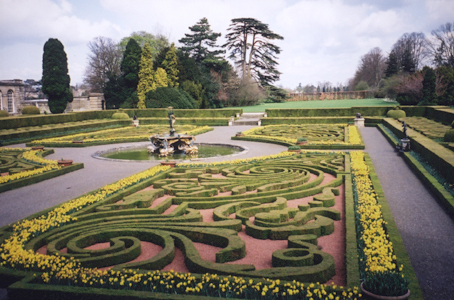
- [View larger image]
The Italian Garden at Blenheim Palace
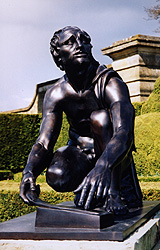
-
[View larger image]
Scythian knife-grinder, copied by Soldani

- [View larger image]
The Wrestlers, copied by Soldani
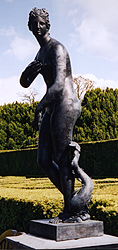
-
[View larger image]
Venus in the Garden
A copy of Soldani's bronze
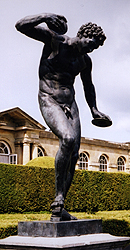
- [View larger image]
Dancing Faun in the Garden
A copy of Soldani's bronze
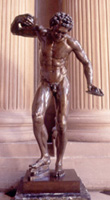
- [View larger image]
Dancing Faun, by Soldani
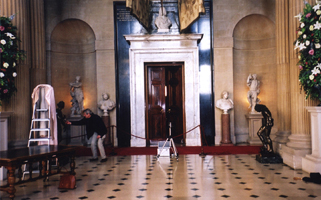
-
[View larger image]
Photography in the Great Hall

- [View larger image]
Venus, by Soldani
Rousham
The tradition of placing copies of antique statues in English gardens begins at Rousham House near Oxford where William Kent redesigned the Tudor house and the gardens around 1738. Copies of Venus and Faun were set in niches on the principal façade of the house. Faun and Venus are white-enamelled lead copies made by Sir Henry Cheere.
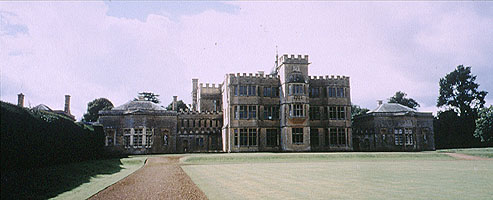
- Façade of the Tudor house at Rousham

-
[View larger image]
Copies of Faun and Venus set in niches at Rousham
The Dying Gaul in the garden was made by Peter Scheemakers in the early 1740s. There were also other statues in the garden, made of lead and painted white, by the van Nost workshop.
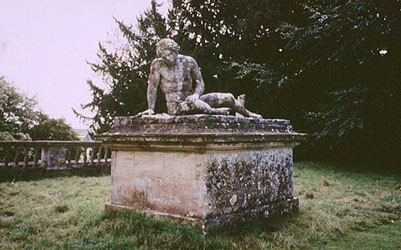
- [View larger image]
The Dying Gaul at Rousham





